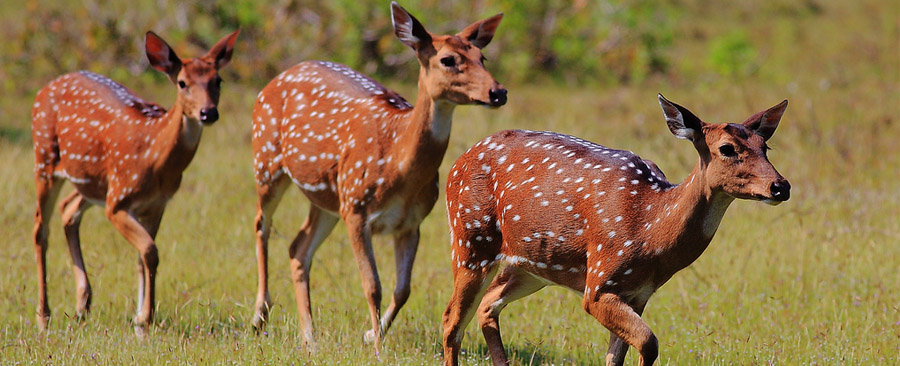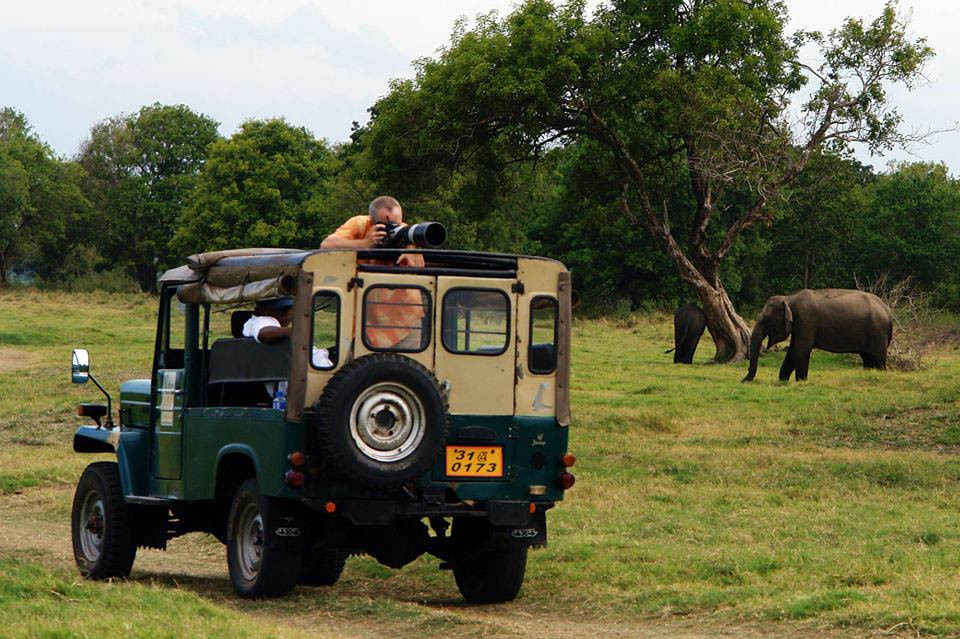
Wilpattu National Park, the largest wildlife sanctuary in Sri Lanka span an area of no less than 131,693 hectares with altitude ranging between the sea-level and 152 meters
Topography of Wilpattu National Park situated in the dry zone, isn’t like any other wildlife sanctuary in Sri Lanka. A unique complex of over 50 wetlands called "Villu" is the most prominent topographical feature of the national park. 'Villu' are shallow natural lakes filled with rainwater surrounded by open grassy plains amidst the dense scrub jungle. The presence of these Villus with an abundance of water can best be explained in the Weather patterns that prevail over the park: while the period of drought is only during the months of May to early September, the main rainy season is during September to December with the heavy downpours of north eastern monsoon; inter monsoon season visits the park March and April. Annual temperature in the Park is around 27.2 Celsius and its annual rainfall is approximately 1000 mm.
The best time to visit Wilpattu National Park is during the months of February and October. Wilpattu National Park has a good network of gravel roads, particularly between the water holes.
Wilpattu National Park’s varying natural habitats; coastal belt, natural lakes (villus), rocky outcrops, scrublands, open grasslands and dense forest provide for numerous species of animals. Among the species are 31 mammals. The biggest draws in Wilpattu are Leopards (Panthera pardus kotiya) and Sloth bears (Melursus ursinus). Apart from those two mammals are Asian Elephants (Elephas maximus), Spotted Deer, Barking Deer, jackals, sambhur, barking deer, mouse deer Wild Pig, Water Buffalo (Bubalus bubalis) and Mugger Crocodiles.
The Villus support a wide range of birdlife: endemic birds include the Ceylon Junglefowl, Brown-capped Babbler, Ceylon Woodshrike and Black-capped Bulbul in riverine habitats.
Countless species of birds can be found and the park plays host to numerous winter migrants from November to March, while menacing crocodiles top the list of reptiles.
Butterflies recorded include the Great Eggfly, Blue Mormon, Common Mormon, Common Rose Great Orange Tip, Glad-eye Bushbrown, Blue Mormon, Common Mormon, Common Rose and Crimson Rose.
At Wilpattu National Park, among the reptiles found the most common are the Monitor (Varanus bengalensis), Mugger crocodile (Crocodylus palustris), Common cobra (Naja naja), Rat snake (Ptyas mucosus), Indian python (Python molurus).
Roaming on the grasslands are Star tortoises (Geochelone elegans) at Wilpattu. In the large Villus are Pond turtle (Melanonchelys trijuga) and the Soft shelled turtle (Lissemys punctate)
Jeep Safaris in Wilpattu National Park
